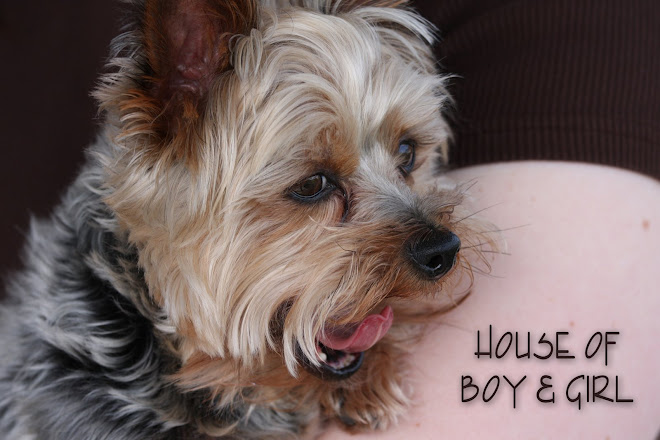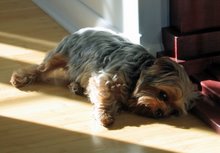skip to main |
skip to sidebar
On the second day of our vacation we decided to tour the World War II sights of Normandy. We began our day in Caen, at the museum and memorial known as "Le Memorial". This is an excellent museum that walks you through the years leading up to the war, through the war, and then finishes with a display on the cold war. You start your tour at the top of a large spiral ramp with displays covering World War I, and you follow the ramp down the years and basically "spiral down into war". At the bottom of the ramp and throughout the basement of the museum are the WWII displays, focusing mostly on the European theatre, the soldiers who fought there, and the people who lived there. The museum also had a really interesting short film called "Le Jour J" (D-Day). It was done in a split-screen style, with one half of the screen showing the activities of the allies, and the other half showing the simultaneous activities of the Germans on that day. I wouldn't say it was a fun place to visit, but it certainly gave us a good background for what we would see the rest of the day, and it did an excellent job of reminding us of the necessity and the cost of war.




We grabbed a quick bite to eat at the museum cafe for lunch, and then headed north to the coast to the town of Arromanches-les-Bains. As we neared the town, we encountered humongous tour buses full of Brits and Germans driven by crazy drivers that were attempting to navigate impossibly narrow and twisty roads. I was pretty sure we'd be squished a few times, but we managed to make it by them with a couple inches to spare.
We eventually made it to the coast where we found Port Winston, one of two Mulberry harbors anchored on the north coast on Normandy during the war. They were assembled in England, then towed across the English Channel to be anchored. "Mulberry A" was anchored on Omaha Beach, and was used by the Americans. It didn't last long as it wasn't very well anchored. "Mulberry B" did much better, and parts of it have lasted to this day.
The artificial harbor featured huge breakwaters made from concrete-filled caissons sunk in the seabed. Those formed a protective barrier around the piers. Some of the piers were light metal stages resting on floats, and others were anchored to the sea-bed. Most of the pieces of the harbor have either sunk or floated away over the years, but a few remain. There's a museum at the beach that I'm sure would have been interesting to go through, but we skipped it in favor of being able to see more sights.
 The remains of the piers are in the foreground.
The remains of the piers are in the foreground.
 Off in the distance you can see what's left of the breakwaters.
Off in the distance you can see what's left of the breakwaters.
 It was a bit windy that day.
It was a bit windy that day. This is a section of a pier.
This is a section of a pier.

 This is one of the anchors.
This is one of the anchors.


We finally arrived at our first hotel for the trip at about 6 pm, after driving through a dreadful rainstorm between Caen and Torigni-sur-Vire. Driving in bad weather in a foreign country after having had no sleep for over a day is NOT fun. But, we survived.
Jeff found this bed and breakfast online after we researched EVERY bed and breakfast in Normandy. I'm not kidding. Every one. None of them really caught our eye, but this one seemed acceptable, and it was available, so we took it. It turned out to be a fantastic place to stay. The room was impeccable and HUGE for a French hotel room. It was even huge by American standards. We were pretty pleased when we were shown the room by the very sweet owner who didn't speak a word of English (we managed to get by just fine with our mad Rosetta Stone skillz). When her husband, who did speak English, showed up and introduced us to the powered black out shutters on all the windows of our room, we were thrilled! They really helped us get a couple of good nights of sleep in at the beginning of the trip. Being the only guests in a humongous house helped make it extra peaceful, too.
Here's the bedroom (we had the "Savannah Room"):


 This is most of the bathroom:
This is most of the bathroom:

 We were treated to an array of fresh pastries and breads each morning, along with some fruit, yogurt, local jams, and real honey, all served in the super cute French country kitchen. It was all pretty yummy.
We were treated to an array of fresh pastries and breads each morning, along with some fruit, yogurt, local jams, and real honey, all served in the super cute French country kitchen. It was all pretty yummy.


 Check out the awesome range:
Check out the awesome range: These are the owners, Colette and Daniel:
These are the owners, Colette and Daniel: This is the back of the hotel and the pond behind it:
This is the back of the hotel and the pond behind it:
 It was within an hour or so driving distance of all the sights we wanted to see in Normandy, and it worked out really well for us. If you're ever looking for a place to stay in Normandy, check it out.
It was within an hour or so driving distance of all the sights we wanted to see in Normandy, and it worked out really well for us. If you're ever looking for a place to stay in Normandy, check it out.
The ferry dropped us off on the right side of the Seine, and we drove back down the riverbank to the town of Jumieges to see the ruins of the Abbaye de Jumieges. The original abbey dates back to the 7th century. That one was destroyed by the Vikings. In the 10th century, Duke William Longsword (a good, strong last name) built a new Benedictine abbey on the ruins of the old abbey. The monks hung out there for a few centuries and then left during the Revolution. In 1793, the abbey was bought by a merchant who decided to use it as a quarry, and proceeded to use explosives to blow it up, producing the ruined state we see today. In 1852, a new owner arrived and set about preserving the ruins. As you can see by the scaffolding in our photos, the French are still working on the preservation...
 My eyes are closed in this photo because I'm sooooo sleepy...
My eyes are closed in this photo because I'm sooooo sleepy...















These cats were busy trying to find a warm and quiet place to take a nap. They had selected some large planter boxes when we arrived.


On our way out, we noticed that they'd moved to a new spot. Perhaps the planters were too damp.

 Jumieges was our last touristy stop for the day. We left Jumieges and hit the highway towards our home for the next couple of nights, Le Clos des Matignon in Torigni-sur-Vire. I'll show you photos of that in our next post.
Jumieges was our last touristy stop for the day. We left Jumieges and hit the highway towards our home for the next couple of nights, Le Clos des Matignon in Torigni-sur-Vire. I'll show you photos of that in our next post.
On our way out of Giverny, we passed through the town of Vernon. We crossed over the Seine and ended up in the old town portion of the city. We decided to park the car for a few minutes and take some photos because it seemed sort of picturesque, and because Jeff had read about the town in one of our guidebooks prior to leaving on our vacation.
We walked back across the Seine via the Clemenceau Bridge, and ended up near the old mill, which is built straddling two piers of the old bridge across the Seine. The old bridge dates from the 12th century, and the mill dates from the 16th.


 Right next to the mill is the Tourelles Castle. It dates from the middle ages.
Right next to the mill is the Tourelles Castle. It dates from the middle ages.
 Walking back across the Seine, we got a decent view of the Eglise Notre-Dame, a church dating from the 12th century. We didn't go in, but rather headed back to our car to continue our journey towards our bed for the night.
Walking back across the Seine, we got a decent view of the Eglise Notre-Dame, a church dating from the 12th century. We didn't go in, but rather headed back to our car to continue our journey towards our bed for the night.

With the exception of our first trip to Europe back in 2003, we've always had our Garmin GPS unit with us. For the most part, it does a great job of navigating us through the twisty roads of Europe, around confusing roundabouts, and through both tiny towns and large cities. We are occasionally led through cabbage fields along cart paths, but as those stories serve to add color to our vacation, we don't mind.
Our next destination for the day was the town of Jumieges, another town near the Seine, and another hour or so along our drive to Torigni-sur-Vire. Garmin took us right down to the town, but on the opposite side of the river, and presented us with a "board ferry" command. Hmm. We had a) no idea what times the ferry ran, and b) no idea how much the ferry cost, so we decided to drive up the river a ways to see if we could find a bridge. We drove about five minutes and discovered... another ferry. Hmm. This time the ferry was on our side of the river, and was actively being boarded by another vehicle. We lingered for a minute, and were waved on board by the pilot, who charged us nothing, and deposited us on the other side of the river about five minutes later. As usual, Garmin was right.

 That's our black sedan on the left in the photo above. It's a new model for Renault, and we noticed it being investigated by people during the entire week we had it. One day on the highway, the proud owner of new black Renault Fluence passed us grinning widely. It was a bit strange, as generic black sedans are not all that exciting over here in the US, and I'm not sure why this one was that interesting over there. Anyway, it served us well for the week we had it, though I think we were both hoping for something a bit more quirky and "French" for our trip.
That's our black sedan on the left in the photo above. It's a new model for Renault, and we noticed it being investigated by people during the entire week we had it. One day on the highway, the proud owner of new black Renault Fluence passed us grinning widely. It was a bit strange, as generic black sedans are not all that exciting over here in the US, and I'm not sure why this one was that interesting over there. Anyway, it served us well for the week we had it, though I think we were both hoping for something a bit more quirky and "French" for our trip.



























































